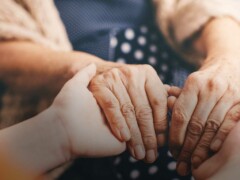
Life with spasticity
Be the hero of your journey and find out whether spasticity could be affecting you, with helpful tips from people living with the condition on how to manage it.
People affected by spasticity
12M
people are affected by spasticity worldwide.1
45%
of stroke survivors may develop spasticity within 3 months.2
86%
of people with multiple sclerosis have some form of spasticity.3
Life with spasticity for David
Spasticity can have a huge impact on daily life. In this video David Britt talks about his hospital stay and the experiences he had.

References
1 Johns Hopkins Medicine. Spasticity. Accessed: March 2024. Available at: https://www.hopkinsmedicine.org/health/conditions-and-diseases/spasticity
2Schinwelski MJ, Sitek EJ, Wąż P, Sławek JW. Prevalence and predictors of post-stroke spasticity and its impact on daily living and quality of life. Neurol Neurochir Pol. 2019;53(6):449-57.
3Milinis K, Tennant A, Young CA; TONiC study group. Spasticity in multiple sclerosis: Associations with impairments and overall quality of life. Mult Scler Relat Disord. 2016 Jan;5:34-9.







